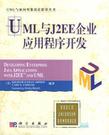UML与J2EE企业应用程序开发
出版时间:2004-1 出版社:科学出版社 作者:Khawar Zaman Ahmed 页数:330 字数:422000
内容概要
本书通过一个完整的实例,系统介绍了用J2EE开发企业级软件工程时,将UML建模技术应用到软件开发过程各个阶段的方法。本书首先介绍了J2EE的基本概念和主要技术,以及UML中的各种设计视图和基本原理,在此基础上,深入讲解了如何使用UML进行分析和设计,以及如何使用UML为J2EE主要技术建模。 本书不仅适合于初学UML和J2EE的读者,而且对于J2EE程序开发人员和软件工程项目管理人员也有很大的参考价值。
作者简介
Khawar Ahmed is a member of the Rational Rose team at Rational Software corporation.He assists internal and External customers of Rational Rose with the use of UML and Rational Rose in the areas of Java,J2EE,XML,and Web modeling.He has over eleven years of software develpment esperience and has been using visual modeling since the early 1990s.
Cary Umrysh has over twelve years of experience in object-oriented software development.Formerly a Rational Rose development mangager and product manager at Rational Software Corporation,he is currently managing development for several key Enterprise Java software systems for use ing the energy industry.
书籍目录
Forword Preface Intended Audience How to Use This Book Chapter Summaries Conventions Acknowledgments Chapter 1 Introduction to Enterprise Software What Is Enterprise Software Evolution of Enterprise Software Enterprise Software and Component-Based Software Summary Chapter 2 Introduction to the J2EE What Is the Java 2 Platform, Enterprise Edition? A Brief History of J2EE Why J2EE A Brief Overview of J2EE Summary Chapter 3 Introduction to the UML UML Overview Why Use the J2EE and the UML Together? Challenges in Modeling J2EEin the UML Extension Mechanisms in the UML The Approach to J2EE UML Modeling Summary Chapter 4 UML and Java Representing Structure Representing RElatinoships Summary Chapter 5 Overview of Activities What Is a Software DEvelopment Porcess? Overview of Popular Approaches Approach Used in This Book Overview of Major Activities Summary Chapter 6 Architecture What Is Software Architecture? Why Architecture? Key concepts in Enterprise Application Approaches to Software Architecture Putting It All Together Summary Chapter 7 Analyzing Customer Needs Why Software Analysis and Design? Problem Analysis Use Case Modeling Identifying the Actors Finding the Use Cases Use Case Diagrams Use Case Relationships Sequence Diagrams Activity Diagrams Summary Chapter 8 Creating the Design Use Case Analysis Use Case Realizations Refined Use Case Description Sequence Diagrams Collaboration Diagrams Class Diagrams Coalescing the Analysis Classes Packaging Summary Chapter 9 Overview of J2EE Technologies The Big Picture Servlets Java Server Pages(JSP) Enterprise Java Beans(EJB) Session Beans Tntity Beans Message-Driven Beans Assembly and Deployment Case Study Summary Chapter 10 Servlets Introduction to Servlets Servlet Life Cycle Request handling Response Generation HTTP Request Handlers The Request Dispatcher Interface Modeling Servlets in UML Modeling Other Servlet Aspects Servlet Deployment and Web Archives Identifying Servlets in Enterprise Applications Summary Chapter 11 JavaServer Pages Introduction to JSP Anatomy of a JSP Tag Libraries JSP and the UML JSP in Enterprise Applications Chapter 12 Session Beans Introduction to Enterprise JavaBeans EJB Views and the UML Session Beans Types of Session Beans and Conversational State Instance Passivation Transactions Session Bean Technology Modeling Interface Behavior Session Bean Life Cycle Session BEan Common Scenarios Modeling Session Bean Relationships Managing Performance The Local Client Identifying Session Beans in Enterprise Applications Summary Chapter 13 Entity Beans Introduction to Entity Beans Entity Bean Views and the UML Persistence Abstract Persistence Container-Managed Relationships Entity Bean Technology Entity Bean Life Cycle Entity Bean Common Scenarios Modeling Entity Bean Relationships Identifying Entity Beans in Enterprise Applications Summary Chapter 14 Message-Driven Beans Introduction to Message-Driven Beans Message-Driven Bean Views and the UML Message-Driven Bean Technology Message-Driven Bean Life Cycle Message-Driven Bean Common Scenario Modeling Message_Driven Bean Relationships identifying Message-Driven Beans summary Chapter 15 Assembly and Deployment Component Modeling Component Modeling of J2EE Technologies Deployment Modeling Traceability Revisited Assembly and Deployment of Enterprise Java Summary Chapter 16 Case Study Case Study Background Problem Statement Rationale and Assumptions HomeDirect Requirements Inception Phase Elaboration Phase Remaining Phases Summary Glossary References Index
图书封面
评论、评分、阅读与下载
